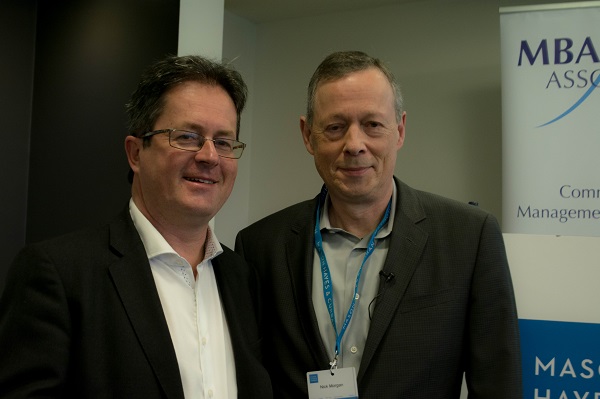Category Archives: Uncategorized

Business Excellence Hall of Fame
The 2022 Excellence Hall of Fame Induction Ceremony Gala Dinner was hosted by the Business Excellence Institute recently in the Shelbourne Hotel, Dublin. Horgan PR & Marketing was delighted to partner the Institute on this event.
Established in 2016, the Excellence Hall of Fame recognises and celebrates people who have made significant contributions to the organizations in which they have worked or, to the discipline of management, or to society at large.
Once a year members of The Business Excellence Institute nominate candidates who meet eligibility criteria and nominations are then voted on by the Institute’s Fellows. The Fellows are selective about who is honoured, they look for people of integrity with a sustained track record of excellence and the bar is set very high.
Past inductees include Henry Mintzberg, Feargal Quinn and Martin Naughton.
This year’s inductees were:
Josef Schmidt (Former Head Coach, Ireland and Leinster Rugby)
Rita Gunther McGrath (Professor of Management, Columbia Business School & Entrepreneur)
Andrew Kakabadse (Professor of Governance & Leadership, Henley Business School)
Teresa Kemppi-Vasama (Executive Chair, Kemppi Oy & Board Member, Cargotec)

A simple Thank You. Let’s leave it at that.
Charities are suffering. Donations are down since the pandemic struck. Of course, people are suffering too, many having to make do with a fraction of thier pre-Covid income and the uncertainty of what lies ahead. Still, there’s a sad irony in donations being low at a time when savings are at record levels. A key point is that we are interacting less with charities during lockdown – no fundraising events, no street collections, and so on.
This was probably in the back of my mind when I transferred some money recently to an emergency relief effort in Syria. Two weeks later, a letter arrives in the post. It’s a thank you. Or is it? Sure, the opening lines are an acknowledgement of my donation, but the second paragraph quickly shifts to the next emergency and the urgent need for funds. And the letter is wrapped in marketing collateral, all seeking to part me from more money.
Now I’m not overly sensitive and I get the need for the sector to exploit all possible touchpoints with prospective donors, but I couldn’t help feeling a tad put out. Was I really going to reach into my pocket a second time just 2 weeks on?
Anyway, I don’t mean to criticise, given the difficulties facing the charity sector, but the episode recalled a business seminar I attended a couple of years ago. The speaker was Whitney Johnson, an acclaimed US executive coach and author of Build an A-Team, published by Harvard Business Review. Johnson was talking about motivation and alluded to an office scenario many of us will be familiar with.
You’ve just netted a nice piece of new business and the boss is on the phone. “Just wanted to say great pitch there, you put a lot of work into this and it really showed. So well done.” Cue delighted employee, about to hang up feeling great that his work has been recognised. “…you know we’ve that second round presentation next week so let’s be sure we give it our all.” Cue disappointed employee, let down as a congratulatory call quickly morphs into just another plea to work harder. A motivational opportunity turned on its head.
The lesson is a simple one. Thank yous are fragile, to be handled with care. Be sure to uncouple them from the everyday requests that make up most phone calls with staff. Just leave these for a separate call.
In pushing too hard, charities have an excuse. Not sure bosses do.

The employer brand: how to cultivate it
“If you lose money for the firm, I will be forgiving. If you lose reputation, I will be ruthless.” I’ve used Warren Buffett’s words of warning previously, but they set the scene nicely for a blog on employer branding, a very current buzzword in HR circles. Employer branding is how organisations create a reputation as an employer of choice. This is important both in attracting external talent who want to be associated with this brand and in building engagement among current employees, who are motivated to work with a brand aligned to their own values. This, in turn, is directly linked to greater productivity.
So what is a brand, exactly? Skip back to the 1800s, a period often associated with the advent of mass-branding. In an age of commodities, a brand was a quality mark, an identifier so the buyer could distinguish one good over another. A merchant putting his name on a product was an assurance of consistency, as the product could be traced back to that merchant if it let you down. Branding is much more sophisticated now, but the same principle applies. A brand differentiates, setting you apart from the generic. Nowadays that differentiation goes well beyond quality to other, often more nebulous, values.
Now consider today’s employment market, and then consider Generation Z. Sure, we struggle to grasp exactly what makes this generation tick, but we know they want meaning in their working lives and that often involves working for a ‘brand’ that shares values they hold dear. If your organisation is in financial services, fighting for ever-scarce fund accountants, or an IT firm seeking software developers, your employer brand could make all the difference. Otherwise, you’re just one among many.
So, then, what is your brand? Well it’s not something you can concoct at the next management meeting. For one, it’s wrapped up in the culture of the organisation and of the management team also. Above all, know that you do not define your brand. Your target audience does. This is a failing we see all the time with marketing brands. You may see your organisation as diverse and employee-centric, but if your staff see you otherwise, that’s what counts. That’s your brand. Companies the world over struggle to accept this. It’s fine to want to be the best at something, but a real brand is rooted in reality rather than aspiration. As Buffett’s quote indicates, reputation has to be earned, and earned over time.
So listen. Ask your staff – let them define your employer brand so it is genuine and meaningful. And ask them regularly, so you can track movements in your brand perception.
Then consider how to communicate your brand. Make sure your website and any other touchpoints with staff and prospective staff relay a consistent message. But words are cheap. Put your money where your mouth is and invest in initiatives that support your brand positioning in a substantive way.
Society, epitomised by Gen Z, has fallen out of love with packaging, and for good reason. So don’t think you can hoodwink Generation Z with glossy employer brand messaging.
Show me the substance.
This article was written by Conor Horgan for client Eden Recruitment.

Am I hearing you properly?
In today’s world, “virtual” is a good thing. It’s efficient, it saves money, it’s progressive. Not when it comes to communicating, apparently. That was the import of a talk by expert Dr Nick Morgan at an event hosted recently by the MBA Association of Ireland at Masons Hayes & Curran in Dublin.
Author of “Can you hear me? How to connect with people in a virtual world”, Dr Morgan is forthright in implicating the smartphone in the rise in employee disengagement across the world, not least in Ireland. And equally its role in alienating rather than helping old people, as it has been heralded as doing.
Interesting nuggets abound in Morgan’s presentation. Did you know that 90% of us think our emails are understood, when in fact only half are?
Down to basics. The issue with virtual communications is that content and body language need to be aligned for conversation to take place. With no body language there is no real communication.
Similarly, feedback is fundamental to face-to-face communication – in a virtual work, we give out content but we don’t see how it is received. This lack of feedback makes for little connection and little empathy.
Of course, there’s the video-conference. But beware. Our minds don’t work well in 2D – don’t be fooled into thinking you are seeing the person! The artificial environment of video-conferences is very taxing on our brains, so keep them short and with a minimum of participants.That said, they are preferable to audio-conferences. Leaving aside Morgan’s insights into what people actually do when they press that mute button, he contends that without emotions, people can’t take decisions and that the lack of involvement in audio-conferences leads to bad decision-making.
Email is the most prevalent form of communication in most workplaces. And it has its problems. For one, Morgan points out that purely using words to describe emotions is not natural and it is emotions that give us the connection that is at the heart of communication. As a result virtual relationships are fragile. They lack the forgiveness that characterises the conventional relationships we enjoy.
Surprisingly, perhaps, Morgan suggests one way to counter this is by using emojis to inject a sense of emotion into the email exchange. “We need to learn a new language” he says.
So how do we get heard in this virtual world? It is imperative that we spend some real time with those we communicate with virtually. Colleges are doing this – while virtual is the MO, projects kick off with face-to-face meetings. That builds trust, familiarity and forgiveness. If you work in a large corporation where virtual communication dominates, take the time to physically meet those you are dealing with online. The effort will enhance your virtual communication.
As many of us know, a big issue is that often young people don’t want this real interaction, they prefer the perceived control and anonymity of the virtual world. I recall asking a journalist as to the best way to land a story in the media. “Pick up the phone!” was his reply. Persuading the new generation to do this instead of sending off an email can be a challenge. Reared as they are on smartphones, they are not easy to lure back to the real world!.

Mexican post-match conference takes the biscuit, and a lot more
We may not always appreciate it, but I think sports fans in Ireland and Britain can be thankful that we are spared the worst excesses of commercial intrusion on the games we love.
Watching La Liga on a Sunday night, I always feel the electronic pitchside advertising is that more distracting than its Premiership equivalent. Also, I’ve noticed that many press conferences on mainland Europe feature an ultra-annoying mini screen plonked squarely in front of the team coach, on which commercial messages rotate. Unmissable, in the truest sense of the word.
That said, the product placement on view in last weekend’s post-match conference at embattled Mexican club Chivas takes the biscuit … or more accurately, the cereal, the mineral cans, the chocolate milk and a lot more besides.
The scene, captured here by ESPN’s Tom Marshall, apparently drew intense giggling from those present, prompting the club president to admit “Our marketing team called it wrong – we must be aesthetically cleaner.”
https://www.pressreader.com/ireland/the-irish-times/20180820/282900911436826